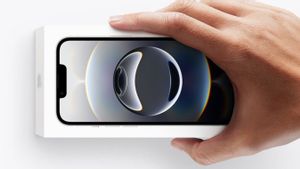JAKARTA - Since Russia's war with Ukraine continues, many gruesome pictures of victims have been circulating on social media. Image of a corpse lying on the street or inside a destroyed house.
The image was then shared on Twitter as well. When shared sensitively, such images can shed light on the horrors of war and garner support for those who need it.
But as The Verge, data recorded by open-source intelligence and fact-checking group Bellingcat, points out, repeated exposure to such graphic imagery can contribute to a sense of secondary trauma.
One solution is to use the newly released Twitter feature, thus, it allows you to flag sensitive images, which will hide the image behind warnings about its content.
If you want to try flagging sensitive content, VOI has covered how to use it on mobile and on the web.
Adding warning labels to content via phone app
Add photos or videos as usual. Tap on the three-dot icon at the bottom right of the photo. From this editing menu, tap the Flag icon at the bottom right. Choose which content alert best describes the image: Nudity, Violence, or Sensitive. Twitter lets you choose more than one category at a time. Select Done on mobile Select Save from the top right of the editing menu Publish your tweetAdding warning labels to content via web browser
Add a photo or video as usual. Click Edit at the bottom right of the photo or video. Select the Flag icon on the far right. Choose which content alert best describes the image: Nudity, Violence, or Sensitive. Twitter lets you select more than one category at a time Select Done Then select Save at the top right of the content Publish your tweetThe English, Chinese, Japanese, Arabic, and French versions are automatically generated by the AI. So there may still be inaccuracies in translating, please always see Indonesian as our main language. (system supported by DigitalSiber.id)













